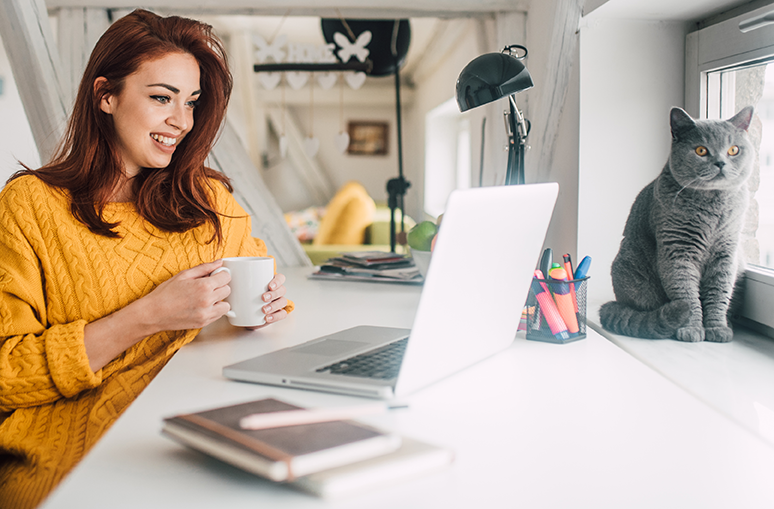The Benefits of Chiropractic Treatment
What is Chiropractic Treatment? Chiropractic treatment is a holistic approach to healthcare, focusing on natural, non-invasive methods. The treatment involves trained professionals using their
Read morePlease note: Our phones will be closed tomorrow, April 16, and for the Easter public holidays. We will reopen 8:30 am Tuesday April 22nd.
Wellbeing

As corporate workers scrambled home due to COVID-19 with their laptops and phones – the big question was well, what do we do now?
Over the last few weeks, it has become obvious that we need to get comfortable in our home working environment and find new ways to optimise our productivity while juggling many other responsibilities.
This poses a significant wellbeing challenge for singles, couples and families all trying to find a rhythm of work as well as staying physically, mentally and emotionally balanced.
Let’s hone in on the five pillars wellbeing framework that we have developed to help you thrive while working at home.
Resilience practice
Resilience is the capacity to deal with rapid change and uncertainty. It is the ability to recover quickly and manage oneself through a challenging time.
The COVID-19 health crisis, constant news updates, juggling home life and team members trying to adjust to working from home – there has never been a time like this in the workplace for our generation. The sheer magnitude of this uncertainty is a recipe for anxiety and depression and this is what we are hearing from our clients.
So the question is – how do I build resilience into my wellbeing in the current environment?
The first thing to do is look at what wellbeing assets or opportunities you have available to you right now. The chances of you having in place some great resources such as an Employee Assistance Program, mental health first aid, wellbeing supports and key contact people in your organisation to confide in is quite high.
Also, whether accessed through your work or externally, practices such as meditation, restorative yoga and mindfulness workshops are readily accessible in these times, so explore your options and schedule in some personal time.
Remember resilience is a skill and takes time to build capacity. During this global health crisis, we all need to build capacity to deal with this uncertainty.
Continue connection
One of the great wellbeing challenges of remote working is maintaining human connection and preventing loneliness. We know that lonely employees are statistically less satisfied with their work, quit more often and perform poorly compared to their more socially connected employees.
As people adjust to their new working environments, it is absolutely critical that we elevate our levels of connection at an organisational and team level. But how do we do that?
In the remote environment, you can achieve this by doing some really basic things. Here are some questions to get you thinking.
To build connections while we are all working virtually it is important to consider reaching out to colleagues, and planning sessions to collaborate virtually, and even bring some fun into your work structure for the week.
Physical activity
Physical inactivity is a wellbeing issue with remote and self-isolating conditions. In normal circumstances we commute and travel into the workplace and achieve an average of 7,000 steps with just incidental walking and movement throughout the office.
At home, if we are simply putting on our tracksuit in the morning and pulling out the laptop in the kitchen we are unlikely to be well set up for a day of movement.
Let’s consider some questions regarding physical activity in your workplace wellbeing program.
If you can combine your existing physical engagements with escaping the house for walks, and exploring any digital platforms you have, you are well placed to combine physical and digital wellbeing = phygital!
Family first
Managing children who would otherwise be at daycare or on regular school holidays has become one of the greatest challenges for working parents.
At the time of writing this, numerous parents are working from home, entertaining school-aged children and dialing into meetings at the same time – it is a colossal juggling act with loaded levels of stress and has resulted in parents working later at night.
What if work and family life did not have to feel like separate entities?
Here are some family wellbeing related questions to get you thinking about your options.
In times like this we really need to get creative with how we can juggle life as a working parents, and broaden the flexible approach to assist family life.
In short, facilitating participation with children can be an excellent way to boost your engagement and overall wellbeing.
Workstation safety
It is crucially important to minimise the risks associated with working from home and based on the current environment we will focus exclusively on the topic of workstation ergonomics.
With less equipment and makeshift laptop setups, achieving great workstation ergonomics can feel impossible for most employees so it is important to provide the resources required to make good choices.
Here are a few very simple tips to being safe in front of the computer:
While some of the basics seem so simple, it is amazing how little we move and care for our posture when we are working at home.
Blog post written by Pinnacle Health Group. Visit their website: https://pinnaclehealthgroup.com.au/.
What is Chiropractic Treatment? Chiropractic treatment is a holistic approach to healthcare, focusing on natural, non-invasive methods. The treatment involves trained professionals using their
Read moreAs we age, it’s particularly important to ensure we are prioritising the health of our muscles in order to protect our bones and joints
Read moreTaryn Dickens, an Able Seaman in the Royal Australian Navy, has faced adversity with unwavering determination and a spirit that shines through even in
Read more© Navy Health Ltd All Rights Reserved 2023
Privacy Policy Terms & Conditions Code of Conduct
© Navy Health Ltd All Rights Reserved 2023
© Navy Health Ltd All Rights Reserved 2023